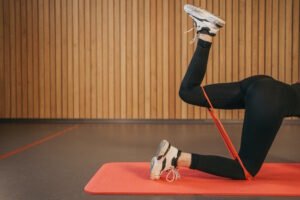
In the pursuit of a strong and resilient core, the integration of Pilates into your daily routine emerges as a compelling strategy. Pilates, with its emphasis on controlled movements, mindful engagement, and holistic core activation, offers a pathway to cultivating enduring strength and stability. The prospect of seamlessly blending Pilates exercises into your daily regimen may raise questions about its effectiveness, frequency, and integration. In this exploration, we delve into the art of incorporating Pilates into your daily routine for core strength, addressing key considerations, practical insights, and the potential impact on your overall well-being.
Is Pilates Good for Strengthening Your Core?
Undoubtedly, Pilates is a powerful tool for strengthening your core. The practice’s foundational principles align seamlessly with core-focused objectives. Pilates exercises target not only superficial abdominal muscles but also deep stabilizers, fostering a comprehensive approach to core strength.
Pilates’ emphasis on controlled movements and proper alignment engages core muscles throughout each exercise. From the iconic “Hundred” to the intricate “Rolling Like a Ball,” each movement demands mindful activation of your core. Over time, consistent Pilates practice leads to improved endurance, stability, and functional core strength.
Can I Do Core Pilates Every Day?
While Pilates offers numerous benefits for core strength, it’s important to strike a balance in your routine. Engaging in core-focused Pilates exercises every day can potentially lead to muscle fatigue and overuse. Instead, aim for a well-rounded approach that allows adequate time for recovery and variety.
Incorporate core-focused Pilates sessions into your routine 2-3 times a week, allowing muscles to recover on non-Pilates days. This approach enables consistent progress while preventing strain and promoting overall muscle health.
How Do I Incorporate My Core into a Workout Routine?
Incorporating your core into a workout routine extends beyond dedicated Pilates sessions. Integrate these strategies to infuse core engagement into various exercises:
1. Mindful Movement: Whether lifting weights, performing yoga, or engaging in cardio, prioritize mindful core engagement. Draw your navel towards your spine, maintaining tension throughout the movement.
2. Plank Variations: Integrate plank variations such as side planks, forearm planks, and high planks into your routine. These exercises effectively engage core muscles while complementing different workouts.
3. Breath Coordination: Coordinate your breath with movements to enhance core activation. Exhale during exertion and inhale during relaxation or preparation.
4. Stability and Balance: Incorporate exercises that challenge stability and balance, such as single-leg movements or stability ball exercises. These variations require core engagement for controlled movement.
Can I Replace Strength Training with Pilates?
While Pilates is a potent tool for core strength, it’s important to recognize the distinct benefits of both Pilates and traditional strength training. Pilates emphasizes functional movement, flexibility, and mind-body connection, making it an exceptional complement to traditional strength training.
Rather than replacing strength training entirely, consider integrating Pilates as a supplementary component of your routine. The combination of both approaches can lead to a well-rounded fitness regimen that addresses muscular development, core strength, and overall body functionality.
In crafting a daily routine that incorporates Pilates for core strength, you tap into a transformative practice that enriches your overall well-being. By aligning mindful movement, targeted exercises, and balanced integration, you create a synergy between Pilates and your daily activities. This harmonious approach paves the way for enhanced core strength, improved posture, and a deeper connection to your body’s potential.